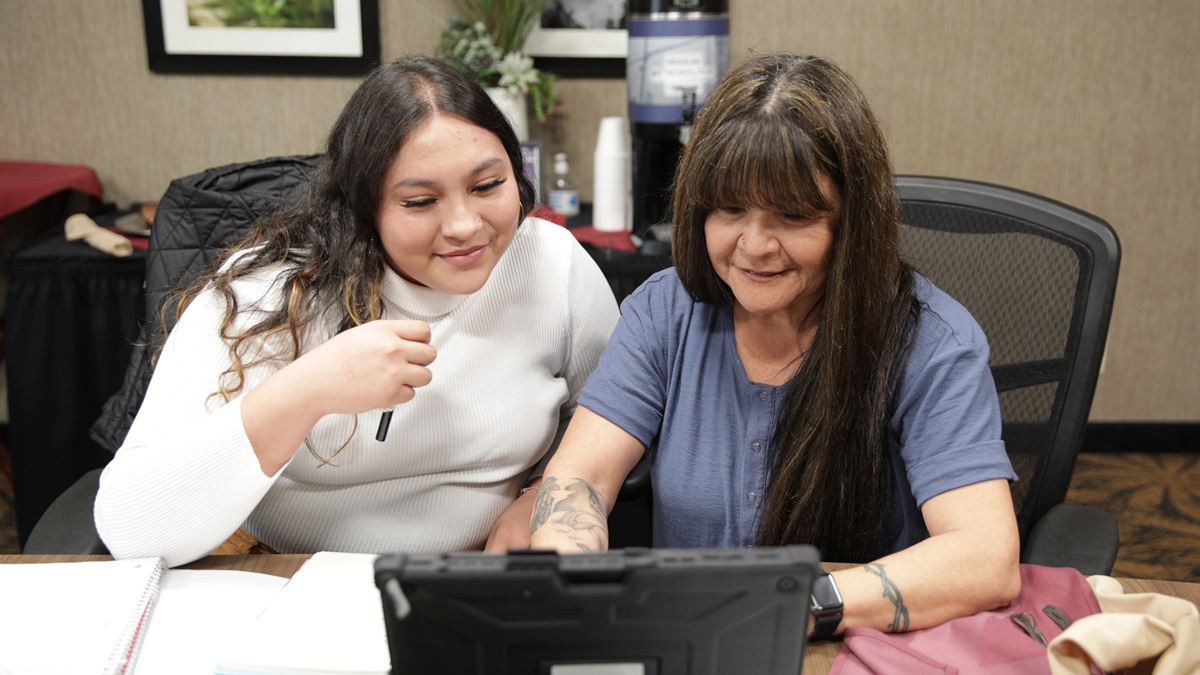
- Details
- By Chez Oxendine
- Real Estate
Colleen Steel has seen firsthand how federal mortgage dollars can transform Native communities when they’re delivered by lenders who know the borrowers and live among them.
Since Steel’s nonprofit organization, Mazaska Owecaso Otipi Financial, joined a U.S. Department of Agriculture demonstration program in 2019, the Pine Ridge Reservation-based lender has deployed $2.2 million across 13 home loans — providing affordable mortgages in a Native community where financing options have been scarce.
“It has helped a lot,” Steel told Tribal Business News. “It’s been very effective and has helped families here on the reservation become homeowners and build assets.”
Now, the Senate has approved legislation that would expand and make permanent the program that enabled those loans. On Friday, the Senate passed the National Defense Authorization Act by a 70-20 vote. The legislation includes Section 301 of the Rural Housing Service Reform Act of 2025, authorizing $50 million specifically for Native communities and making permanent the USDA’s 502 Direct Loan Relending Demonstration Program.
Sens. Tina Smith (D-Minn.) and Mike Rounds (R-S.D.) introduced the provision, which now heads to a conference committee where House and Senate negotiators will reconcile differences between their respective versions of the bill.
The Senate action comes as new research shows the Native relending demonstration program has dramatically increased mortgage lending on reservations. A report published Oct. 7 by the Federal Reserve Bank of Minneapolis’ Center for Indian Country Development found that two Native community development financial institutions — Four Bands Community Fund and Mazaska — used the relending program to issue 35 loans from 2019 to 2024 on the Cheyenne River and Pine Ridge reservations. That represents a 400% increase compared to the seven loans made on those two reservations from 2009 to 2017, before the program launched.
The relending program, launched in 2018 with two Native community development financial institutions, or Native CDFIs, has since grown to include 11 Native lenders across eight states. Pete Upton, chief executive of the Native CDFI Network, said the pilot’s early results showed the difference.
“The amazing thing was that it resulted in those two CDFIs doubling in one year the number of loans that went out the door than the USDA had provided in South Dakota for the previous decade,” Upton said.
The USDA’s Section 502 program provides low-interest mortgages for low-income rural borrowers. But in Indian Country, the program has historically been underutilized. Native CDFIs, which are community-based lenders with deep ties to tribal nations, have stepped in to relend USDA funds directly to Native borrowers.
The USDA said it could not provide comment due to the government shutdown.
Matthew Gregg, senior economist at the Center for Indian Country Development and author of two papers on Native housing finance, said the demonstration project highlighted a straightforward solution.
“As I see it, the USDA had two options – one, they could hire hundreds of Native Americans with deep ties to their community to hopefully help penetrate this 502 direct loan product, or they could work with establishments that have deep connections,” Gregg said. “They chose CDFIs, and the results have been obviously positive.”
Gregg’s earlier research showed the challenges Native borrowers face in traditional lending systems. A 2023 working paper found that on-reservation Native borrowers paid an average of 141 basis points more in interest rates and 204 basis points more in rate spreads than white borrowers with similar credit profiles. At the 90th percentile, Native borrowers faced interest rates around 9% — compared to about 5% for white borrowers.
Those disparities are often tied to the prevalence of “home-only” loans, which are used for manufactured housing not tied to land and carry higher costs and fewer protections. Gregg’s research found that 39% of all Native loans were home-only, and 87% of manufactured home loans on reservations fell into that category.
Upton said the 502 relending program showed how Native CDFIs could counter those trends.
“The project affirmed that Native CDFIs are equipped to more effectively deploy money in the communities they know,” Upton said. “They know their borrowers and live in the communities they serve.”
Steel, executive director of Mazaska, said the program supports low-income families on the reservation to either build or purchase manufactured homes. She said the lending on Pine Ridge presents unique challenges.
“There’s no housing stock, and there aren’t really any lenders besides us,” Steel said, noting that Lakota Federal Credit Union is the only other local mortgage lender.
Steel said Mazaska requires financial training and homebuyer education before clients can apply, ensuring borrowers are prepared for the responsibilities of homeownership. She said the approach reflects the trust Native borrowers often struggle to place in outside institutions.
“We walk them through the whole process,” Steel said. “We don’t just give them an application. We go step by step with them, to the end. We build that relationship with them so they can trust us and feel comfortable coming to talk to us.”
Steel said that trust extends to how Mazaska handles emergencies.
“If there’s a death in their family and they get behind on their mortgage payment, we don’t go straight to foreclosure,” she said.
Steel said the relending program has streamlined the lending process compared to working directly with USDA.
"The RD loan application involved so much paperwork," Steel said. "In doing that program, we use our own application and our own credit memo to get them approved. We don't have to go through the lengthy USDA application."
Steel said the program has worked well for Mazaska and could benefit other tribal communities.
"Everybody could use it — all the other reservations could sure use the money," Steel said. "I think it's working as is; it's working perfectly for us right now."
Upton said the program’s success has built momentum in Washington. The Native CDFI Network has advocated for Congress to make the demonstration permanent and expand its funding.
“Section 301 of the Rural Housing Reform Act… seeks to make this demonstration project under the USDA 502 program and authorize $50 million specifically for Native communities,” Upton said.
He added that the expansion beyond the initial two CDFIs shows the appetite among Native lenders to take on housing finance.
“The data suggests that this program was hugely successful, which is why it was expanded to the 11 CDFIs that now participate,” Upton said. “That says there’s an appetite for Native CDFIs to receive this long term loan and expand that product.”
Gregg said the program’s success reflects the strength of Native CDFIs as institutions.
“For one of the pilot programs, Four Bands, they weren’t involved in housing before they got this large long-term loan from the USDA,” Gregg said. “They started issuing mortgages for the first time from this program. Since the relending program has started, they’re issuing different types of mortgages, they have experts in home loans, and they’ve grown that program out.”
Upton said the broader lesson is that investing in Native CDFIs produces results.
“This is just an example of when you invest in Native CDFIs, they move money in ways that alternative banking institutions don’t, especially in tribal areas,” Upton said.
Brian Edwards contributed reporting.
